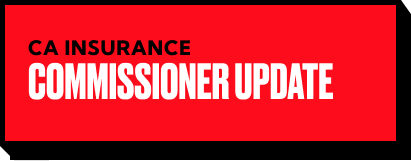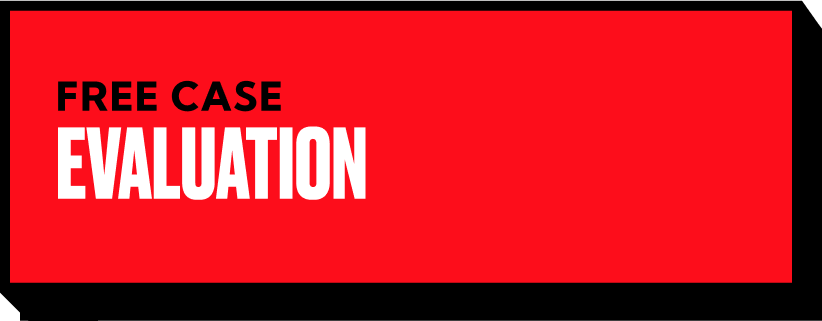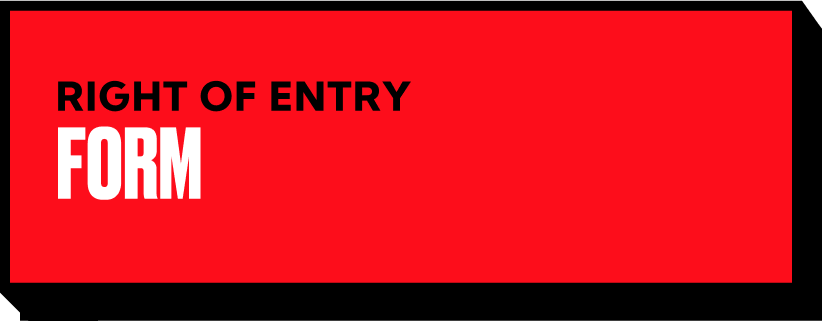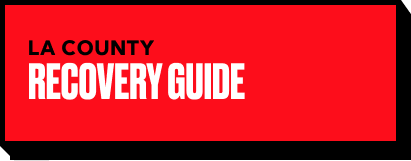Wildfire Class Action Lawsuit Updates
WILDFIRE Class Action Lawsuit
You’re Not Alone. Jacob Can Win Your Case.
Has another party’s negligence caused you property damage or a personal injury? You may not be alone. If the same defendant caused similar harm to many others, you could be eligible to join a class action lawsuit.
At The Law Offices of Jacob Emrani, our attorneys specialize in filing class action lawsuits in Southern California. Class actions often involve claims against companies that sell defective products or violate employment laws. In 2025, Jacob filed a class action lawsuit against Southern California Edison for its alleged role in starting the Eaton Fire, which leveled thousands of buildings and claimed many lives.
Our attorneys have specialized wildfire knowledge that helps them fight for clients’ rights and pursue compensation for property loss, personal injury, or death. They work with residents and businesses after wildfires and other events that cause significant losses.
What You Need to Know About Class Action Lawsuits
Steps in a Class Action Lawsuit
To “join the class”, you must have suffered losses that other victims have also experienced. It must also be proven that the defendant caused these losses through negligence or a mistake. An initial complaint outlines the specific legal claims being pursued and the facts that support them.
You can qualify for compensation by joining the class action lawsuit. Alternatives to doing so include submitting an insurance claim, suing an insurance company, or, in the case of the 2025 Los Angeles wildfires, taking direct legal action against a utility company.
If you’ve been affected by a wildfire, a compensation claim can seek to recover the following types of losses:
- Destroyed homes or vehicles
- Damaged landscaping
- Smoke damage repair costs
- Displacement/evacuation expenses
- Hospital and other medical bills
- Lost income
- Business losses
- Property repair/replacement expenses
- Mental and emotional trauma
- Loss of future earnings
- Pain and suffering
Filing a class action lawsuit requires several steps. These are the basic stages of any class action that ensure the validity of the claim:
- Initial Complaint: This document outlines the claims and facts supporting them. It also details the relief our attorneys seek on behalf of the group and explains why the defendant’s actions warrant treating the case as a class action.
- Filing the Complaint: The document must be filed in a state or federal court. The court with jurisdiction over the case depends on the grievances against the defendant. Notifying them of the claims is the official start of the lawsuit.
- Submitting a Motion for Class Certification: This formal request asks the court to recognize the lawsuit as a class action and states that it meets the required criteria. It also explains how widespread the issue is and how many people it affects.
- Court Hearing: During a class certification hearing, the court evaluates the claim to verify that the proposed class meets criteria that include:
- Numerosity: There are too many claimants for an individual lawsuit.
- Commonality: Class members are impacted by common facts or legal matters.
- Typicality: Representatives’ claims or defenses are typical of those for the entire class.
- Adequacy: Class representatives must adequately protect class interests with no conflicts with members.
- Superiority: A class action is the best way to resolve the issue and would benefit the litigants and the courts.
Certification Is Granted or Denied: Once both sides present their arguments, the court grants certification if it believes the lawsuit satisfies the proper criteria. If so, the class action can proceed. If not, individual plaintiffs may be able to continue the case.
The discovery phase precedes any formal proceedings. During this stage, the plaintiffs and the defendant exchange information, gather evidence, and hold depositions. These are recorded interviews of company representatives, plaintiffs, or expert witnesses. The case can then either go to trial or end in a settlement.
- Trial: In class action lawsuits that go to trial, both sides present evidence and state their arguments. Witnesses are examined and cross-examined, and experts may provide testimony. A judge or jury determines the defendant’s liability and what remedies or compensation they are liable for.
- Settlement: Most class action lawsuits end in settlements. Negotiations can begin at any stage of the lawsuit and may be informal or managed through mediation. A formal settlement agreement is drafted when both parties reach a consensus on its terms. The court oversees the process to ensure the agreement represents the best interests of class members (and can approve or deny the proposal).
How Compensation Is Distributed and Received
The process of distributing funds begins after a class action lawsuit settlement is reached. Winning a suit against a utility company doesn’t mean every class member gets compensated right away. The damages awarded are pooled into a settlement fund from which class members are paid.
However, not every class member receives an equal share. During the claims process, each member must confirm their eligibility and provide documentation and other evidence to support their individual claim. Damages often vary among claimants. The claims process ensures funds are allocated based on the harm each participant has experienced.
The distribution of funds is more straightforward if the case involves uniform damages. Each member may then receive an equal share. In more complex cases, class members may suffer varying degrees of loss or harm. Those more significantly impacted are entitled to higher payouts; their compensation is proportionately larger than for members who experienced less harm.
Why You Need a Wildfire Attorney to Pursue Compensation
Suing a utility company, business, or government entity is inherently challenging. A lawyer is an invaluable asset in finding support and potential compensation. They can identify all possible ways to recover damages, whether an individual or business caused you financial or physical harm, or both.
An attorney can also decide on the best legal strategy. If there’s a class action for the same issue, they can determine if you’re eligible to be a class member. Insurance companies are another reason you need a lawyer. Claims are far too often denied or delayed, and settlement offers are almost always lower than what you need. A lawyer works to increase your offer and can file a bad faith claim if your insurance provider has used unfair or illegal practices.
Negligence vs. Strict Liability
Wildfire victims can use the legal principles of negligence and strict liability:
- Negligence: Negligence refers to when someone’s action or inaction causes harm to others. For example, a homeowner who doesn’t properly maintain their yard or car, someone who doesn’t put out a campfire, or a power company that fails to fix faulty power equipment.
- Strict Liability: A person or business can be liable even if the victim can’t prove they engaged in wrongdoing. They’re responsible for damages simply due to the inherent danger of an issue. In California, a utility company may be required to compensate fire victims even if it didn’t cause the fire.
In California, a special law applies inverse condemnation to utility companies. Inverse condemnation is when the government pays a person for damages caused to their property without permission. It often applies to government entities that damage yards during road or pipe construction. However, our Los Angeles wildfire attorney may use it to secure compensation without proving that the utility company caused a fire.
What You Need for a Claim Against a Utility Company
Filing a claim against a utility company or any large organization can be difficult and time-consuming. If you’re a wildfire victim, you can help your attorney by providing them with evidence that tells the full story of what happened. Utility companies often counter victims’ arguments by claiming they failed to follow administrative processes, missed a deadline, or lacked evidence.
An experienced lawyer provides the legal representation to protect you against these tactics and build a strong case. Even as part of a class action lawsuit, you need the following evidence to increase your odds of a favorable outcome:
- Receipts for evacuation-related costs
- Financial records of displacement costs
- Medical receipts and documentation
- Photographs and videos from before and after the fire
- Bills related to property repair or replacement
- Eyewitness accounts from family, neighbors, etc.
- Testimony from forensics and other experts
Opting Out of a Class Action Lawsuit
Class members have the choice to “Opt-Out” if they don’t want to be included in the process or settlement. A court document explains the procedure. Opting out gives you the right to file an individual lawsuit, and you won’t be bound by the outcome of the class action. However, you’ll lose the ability to participate or receive any settlement benefits. An opt-in system used in some jurisdictions and certain types of class actions requires actively stating your intention to participate.
Potential class members are often provided with a response period so they can evaluate their options, seek legal counsel, and decide whether to opt in or opt out. Once the window closes, their decision is usually binding for the remainder of the legal process.
Schedule a Free Wildfire Lawsuit Consultation Today
At The Law Offices of Jacob Emrani, our experienced attorneys find the best legal path to obtaining the compensation you deserve. We can help when your insurance company has denied a claim. When numerous parties are affected, we can file a class action lawsuit like the one against Southern California Edison that began after the 2025 Los Angeles wildfires.
If you’ve been affected by a recent wildfire or other incident, call (844) 795-1333 today for a free case review.
Wildfire Updates
February 11, 2025: The Potential Economic Hit on SCE Becomes Clearer
According to the Los Angeles Times, Southern California Edison could have to repay several billion dollars of the estimated $10 billion in insured damages from the Eaton Fire. Total financial losses could be much higher (by comparison, the utility’s net income was $516 million in Q3 2024). However, SCE may be protected by an emergency fund created by California lawmakers in 2019, which can cover up to $21 billion in losses if necessary.
February 6, 2025: 40+ Lawsuits Are Filed Against Southern California Edison
More than 40 lawsuits were filed against SCE as of February 6, 2025 (per the L.A. Times), amid findings by investigators using drones, cameras, and metal detectors. Theories have emerged about how the utility’s equipment caused the Eaton Fire that destroyed so many structures. Of particular interest are the transmission towers where the first flames of the wildfire were observed.
January 30, 2025: New Evidence of SCE Liability Emerges
Photos of an exposed wire below an SCE utility tower fueled suspicion of the company’s responsibility for the Eaton Fire. Experts believe an electrical arc from an exposed grounding wire ignited nearby vegetation. The utility denied knowledge of any faults in its transmission lines.
January 19, 2025: Jacob Emrani Submits a Class Action Lawsuit Against Southern California Edison
The Law Offices of Jacob Emrani submitted a mass tort lawsuit against SCE in partnership with Rosen Saba, LLP. All homeowners, renters, and business owners affected by the Eaton Fire are invited to schedule a free consultation. Jacob Emrani expressed the importance of accountability and said, “We’re committed to fighting for the compensation our clients need to fully rebuild their lives.”
January 13, 2025: Lawsuits Are Filed
By January 13, NPR reported that at least two lawsuits had been filed against Southern California Edison. Officials speculate faulty power lines may have started the Eaton Fire. One complaint alleged that SCE was negligent in handling what it knew to be extreme fire conditions. It cites the company violated public safety and utility codes and didn’t use power safety shut-offs properly.
January 7, 2025: The Eaton Fire Erupts
The Eaton Fire began in Eaton Canyon and was driven into populated areas like Altadena by strong Santa Ana winds. Ultimately, it would destroy 9,418 buildings, damage 1,073 structures, and kill 17 people, according to NBC News, and burn over 14,000 acres. The Palisades Fire erupted earlier that morning, devastating numerous homes in Pacific Palisades and Malibu. It killed 12 people and destroyed over 6,800 structures.
Have You Been Affected by the 2025 L.A. Wildfires?
Schedule a meeting with our wildfire experts today.
If you’ve lost a home or business in the Eaton Fire or other recent wildfire, our wildfire lawsuit attorneys are here to help. Our ongoing class action lawsuit against Southern California Edison can mean you may be entitled to compensation. Or, we can help if your insurance company has denied your claim.
To set up your free case review, call (844) 795-1333
Find out how much your case is worth
EXPLORE OUR
PRACTICE AREAS
Find Out How Much Your Case is Worth?
Contact the Law
Offices of
Jacob Emrani
In many instances, personal injury cases are about much more than just taking care of your medical costs.
While the often overwhelming costs of receiving medical care and treatment that could be ongoing, long-term or even permanent for your physical injuries are certainly a part of cases like these, your Los Angeles personal injury attorney can also assist you in seeking compensation for injuries that extend to emotional hardship, damage to your personal property and financial coverage.
If you would like to discuss your own personal injury case with a passionate, knowledgeable personal injury lawyer in Los Angeles, we invite you to contact the Law Offices of Jacob Emrani today to schedule a free evaluation of your case. If it is more convenient, one of our dedicated team members can come directly to you.



















